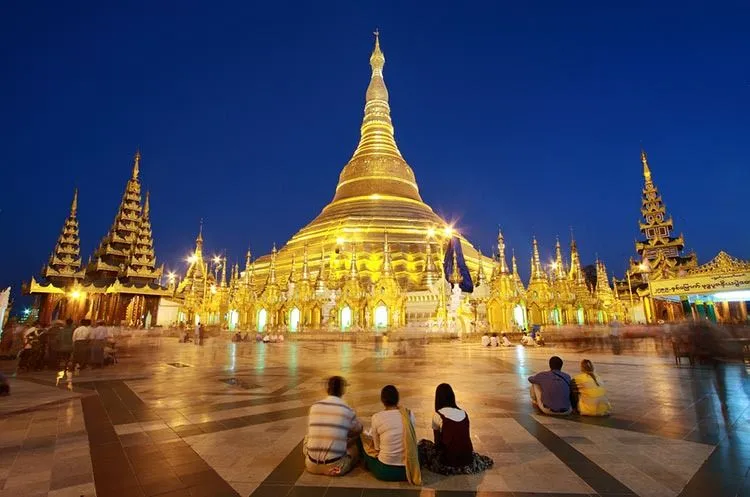large temples: When it comes to architectural wonders, few structures can rival the grandeur and beauty of temples. Temples have been an integral part of human civilization for centuries, serving as places of worship, cultural heritage, and architectural marvels. In this article, we will take a journey through time and explore the top five largest temples in the world. These temples not only showcase the architectural brilliance of their respective cultures but also offer a glimpse into the spiritual and cultural significance they hold.

Importance of temples in different cultures
Temples hold immense importance in various cultures around the world. They are not just places of worship but also serve as centers of community gathering, cultural festivals, and religious rituals. Temples act as a bridge between the material and spiritual realms, providing a space for individuals to connect with the divine and seek solace in times of need. They are not limited to any particular religion or belief system, as temples can be found in different forms across various cultures and traditions.
The significance of large temples
Large temples, with their awe-inspiring size and grandeur, have long captivated the hearts and minds of people. More than just architectural wonders, these temples serve as powerful symbols of devotion, cultural heritage, and spiritual identity. Visitors from around the globe are drawn to these monumental structures, not only for their sheer beauty but also for the profound sense of wonder and reverence they inspire. As pilgrims and tourists flock to these sacred sites, they contribute not only to the cultural enrichment but also to the economic prosperity of the regions fortunate enough to host these extraordinary edifices. Such temples stand as a testament to the boundless creativity, masterful craftsmanship, and unwavering dedication of mankind in its quest for divine connection.
Angkor Wat: The largest temple complex in the world
Angkor Wat, located in Cambodia, is the largest temple complex in the world. Built in the 12th century, it is a masterpiece of Khmer architecture and a UNESCO World Heritage Site. The temple complex spans over 400 acres and consists of several temples, towers, and courtyards. The central temple is dedicated to the Hindu god Vishnu and is surrounded by a moat, symbolizing the cosmic ocean. The intricate carvings, bas-reliefs, and towering spires make Angkor Wat a marvel of ancient engineering and artistry. Large temples, with their grandeur and magnificence, have always captivated the souls of those who visit them.
Beyond being remarkable architectural achievements, these temples stand as tangible representations of power, faith, and cultural heritage. The immense scale and intricate details of these sacred sites continue to leave visitors in awe, instilling a deep sense of reverence and curiosity. Moreover, the allure of large temples extends far beyond spiritual significance, attracting pilgrims and tourists from every corner of the globe and contributing to both the cultural enrichment and economic prosperity of the regions they grace. As towering symbols of human ingenuity, artistry, and unwavering devotion to the divine, these monumental structures will forever inspire wonder in the hearts of all who encounter them.

Borobudur Temple: A masterpiece of Buddhist architecture
Situated in Central Java, Indonesia, Borobudur Temple is one of the largest Buddhist temples in the world. Built in the 9th century, it is a UNESCO World Heritage Site and a true testament to the architectural brilliance of the Sailendra dynasty. Borobudur Temple consists of nine stacked platforms, adorned with intricate carvings and over 2,500 relief panels. The temple’s design reflects Buddhist cosmology, with its three levels representing the realms of desire, form, and formlessness. Climbing to the top of Borobudur Temple offers panoramic views of the surrounding landscape, making it a spiritual and visual delight.
Akshardham Temple: Showcasing Indian craftsmanship
Located in Delhi, India, Akshardham Temple is a modern marvel of temple architecture. Built in 2005, it showcases the craftsmanship and artistry of India’s artisans. The temple complex spans over 100 acres and consists of intricately carved stone structures, sculptures, and gardens. The main temple is dedicated to Bhagwan Swaminarayan and is adorned with exquisite carvings depicting scenes from Hindu mythology. Akshardham Temple also houses a cultural exhibition, showcasing the rich history and traditions of India. A visit to this grand temple is a journey through India’s rich cultural heritage.
Shwedagon Pagoda: A symbol of spirituality in Myanmar
Situated in Yangon, Myanmar, the Shwedagon Pagoda is a shining beacon of spirituality and devotion. Believed to be over 2,500 years old, it is one of the oldest and largest Buddhist pagodas in the world. The pagoda is covered in gold leaf and adorned with thousands of diamonds, rubies, and other precious gemstones. The central stupa, standing at over 100 meters tall, is said to enshrine strands of the Buddha’s hair. The Shwedagon Pagoda is not just a place of worship but also a symbol of Myanmar’s cultural and religious heritage.
Ulun Danu Beratan Temple: A serene temple by the lake
Nestled amidst the scenic beauty of Bali, Indonesia, the Ulun Danu Beratan Temple is a serene and picturesque temple complex. Situated on the shores of Lake Beratan, the temple is dedicated to the goddess Dewi Danu, who is believed to control the island’s water supply. The temple’s unique location, surrounded by mist-covered mountains and clear blue waters, creates a tranquil and mystical ambiance. The architecture of Ulun Danu Beratan Temple blends Balinese and Hindu influences, with multilevel shrines and pagodas. A visit to this temple offers a peaceful retreat from the hustle and bustle of everyday life.
Other notable large temples around the world
While the top five largest temples have been explored in detail, it is important to acknowledge the numerous other magnificent temples around the world. Each with its unique architectural style, cultural significance, and historical importance, these temples continue to captivate visitors and inspire awe. Some notable mentions include the Meenakshi Temple in India, the Temple of the Emerald Buddha in Thailand, the Temple of Heaven in China, and the Golden Temple in Amritsar, India. These temples serve as reminders of the rich cultural heritage and spiritual traditions that have shaped our world.

Appreciating the grandeur of these architectural wonders
In conclusion, exploring the top five largest temples in the world takes us on a journey through time, culture, and spirituality. These temples stand as testaments to human creativity, devotion, and architectural brilliance. From the majestic Angkor Wat to the serene Ulun Danu Beratan Temple, each temple leaves a lasting impression on visitors, evoking a sense of wonder and reverence. As we appreciate the grandeur of these architectural wonders, let us also embrace the cultural and spiritual significance they hold, reminding us of the rich tapestry of human civilization.
If you found this exploration of the world’s largest temples enlightening and inspiring, we invite you to delve further into our insightful articles. Consider reading our piece on the Global Economy, where we unravel the complexities and dynamics that shape our world today. Just as these ancient temples offer a window into the past, our article on the Global Economy provides clarity and perspective on the forces that influence our present and future.




